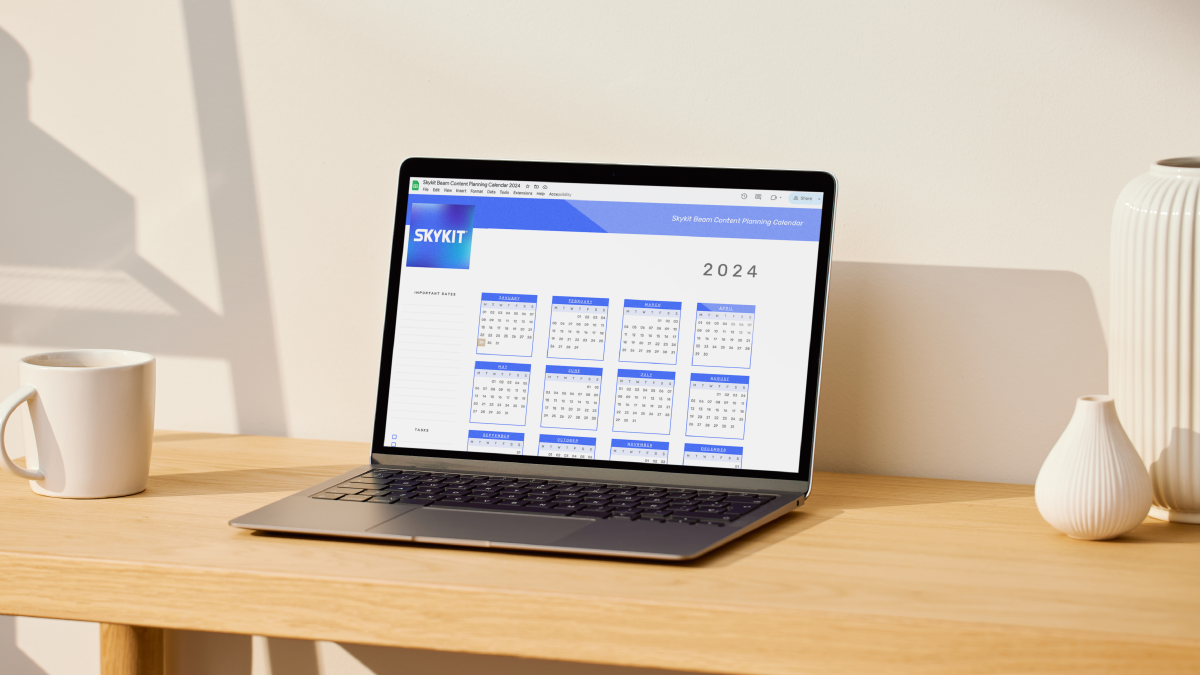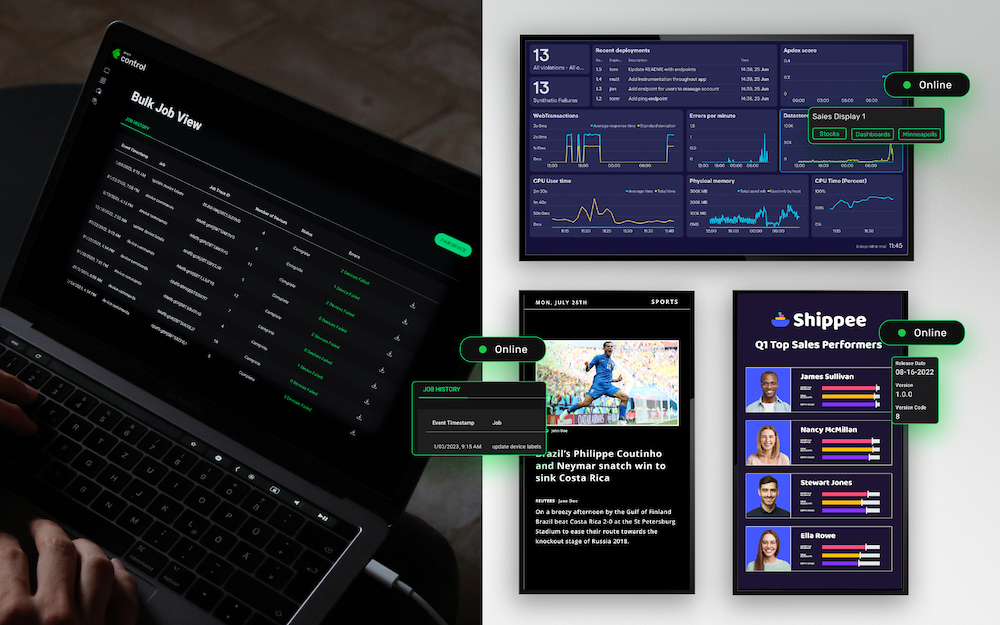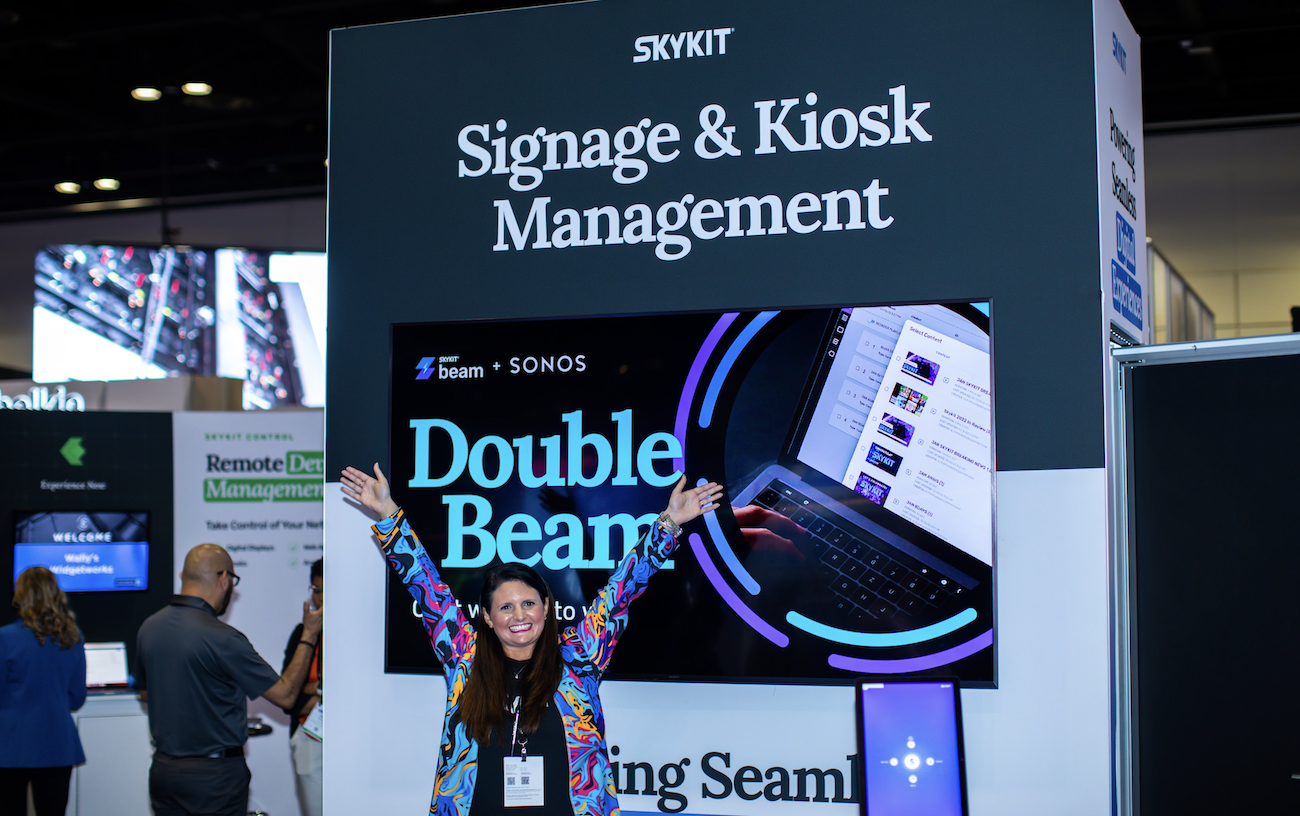Once upon a time in a land far, far away, digital signage didn’t exist.
If businesses wanted to attract the attention of consumers, they did it with posters, radio ads, or television spots. Salespeople were deployed in droves, and the phone became a salesman’s best friend.
Then the VCR was born. Not only did it allow us to see our favorite movie over and over again, but it was also the first indication that video could be produced, stored, and played back for promotional reasons. In the 1970s, retailers could use the ancient machines to play commercials or advertisements in-house for their customers to view as they passed by the shirts to get to the pants.
That’s not digital signage, but they kind of hacked what they used to do what they could to draw attention to promotions.
It was when the Internet was born that the concept of broadcasting on a larger footprint outside of a store or business started to turn in the minds of techno-geeks and advertisers.
Today, the advancements of digital signage are beyond impressive. But to appreciate what a digital signage campaign can do for you and your business, you first must understand how it works. Learning the basics of such an awesome technological advancement can help you make the most cost-effective and reliable choices as you move from static posters and paper ads to powerful digital signage marketing.
That means finding the best software to meet your needs, choosing the most reliable commercial display that will best reflect your message, and learning the language of digital technology so you don’t stare blankly at someone when they start talking nits and omnichannel, and other fun words we like to use in the industry.
The last thing you want is to invest in a project that ends up costing you thousands of (unnecessary) dollars.
But don’t worry. You won’t. We’ve got your back.
How Does Digital Signage Work?
For starters, zillions of little people don’t work on your brilliant digital marketing campaign while you’re sleeping, but…many people do work behind the scenes to give you the very best campaign possible.
For purposes of this post, we’ll keep it simple and pretend you are a retail clothing store in one location, and you’re looking to move into the world of retail digital signage to increase sales and create enough revenue to possibly deploy in a second location.
Sound good? Cool.
Briefly, a digital marketing campaign is a campaign where you deploy a commercial display in your store or business to help sell your products and services or promote new products and services.
It’s just like any other marketing campaign, except your content is delivered via the Internet and shows up on a screen.
The content is either created by you or someone else and is managed and supported by software. (Sit tight, we’ll get to that.)
Your marketing campaign can be made of images, videos, text, live dashboards (for employee engagement, like showing sales numbers or HR updates), or live screen capture.
Really, the choice is yours.
If you choose an interactive campaign, you may want to include a live social media feed too, so that customers can see their own tweets and posts. (People love that.)
Some campaigns happen with one display in one store, others with several displays in several stores.
Often, businesses or other industry leaders consult with a marketing team to discuss what the deployment of their campaign will look like.
Good marketing leaders will investigate other digital signage campaigns launched by similar companies and pull great ideas and nuggets from those campaigns.
Case in Point:
Let’s say one of your competitors is Nordstrom. What is the department store and fashion retail giant doing to up the ante in their neck of the woods?
In late 2014, they installed a digital denim kiosk in one of their stores so that customers could find out which jeans would look best on them without actually trying them on.
Can you imagine such a campaign?
Nordstrom did. And their sales skyrocketed.
By answering a few key questions via a touchscreen, customers could find out what style and jean size was most ideal for their body type. The customer could then go fetch those jeans from the rack, try them on, and head to the checkout happy.
No more struggling to find the “perfect” pair for entirely too long in the confines of a small dressing room.
Now the customer could discover what she needs quickly and spend more time on the store floor- instead of in the back of a dressing room.
This kind of customer engagement is a game-changer. Unique ideas like this one can be a game-changer for you, too. Do your homework and decide what kind of campaign you’d like to launch, then take the next steps to get the hardware and software you need.
What’s the Best Display for Us?
Okay, now that you’ve seen the power of digital signage, it’s time to talk about the components that make up any killer campaign.
The first component to consider is the kind of commercial display you will use. Gone are the days of using a television on a stand with a VCR.
Today, LCD and LED screens are all the rage.
There are lots of different visual displays you can use to show the world what you’re made of. Choosing the right one can be the difference between a successful launch and a not-so-successful launch.
For example, if you want your customers to interact and make choices right there on-site, you don’t want to use a restaurant-style touchscreen kiosk when a large touchscreen commercial-grade display better fits your marketing strategy.
Both produce different results for two very different environments.
We recommend using commercial displays for general-use digital signage (with specialty use cases of kiosks, interactive displays, etc…)
If you’re a mom-and-pop shop and want a sign for specials, you might want to buy a TV at Costco and mount it yourself. Otherwise, go with a commercial-grade visual display.
Commercial displays are designed to withstand extensive use over a long period of time, both indoors and out.
If you buy a TV, rotate it on its side to show a vertical menu or promotion, after about a year, lines will appear on the lower half of the display. TVs aren’t manufactured to run at extended periods of time or vertically, and so you’ll find yourself replacing them much more often. And, not to mention how it looks to the customer when they’re trying to read the screen past lines on the TV.
Not the best impression.
What Digital Signage Software (CMS) Should We Use?
Now that you’ve done your homework and chosen a display that fits your campaign, you need to find the right software solution that supports your content.
A software solution is called a Content Management System (CMS), and basically, you can categorize them in two buckets, if you will:
- A Cloud-Based Content Management System
- A Locally Hosted Content Management System
Here’s the difference:
Cloud-Based Content Management System
A cloud-based content management system is software that delivers your content to remote players (like kiosks or interactive displays) via the Internet from an off-site server. The information is stored on these off-site servers, and streams your content to each remote player, no matter how many you have.
Locally-Hosted Content Management System
A hosted content management system also delivers content to remote players (like kiosks or touchscreens) via the Internet, only it’s delivered from an on-site server that is hosted and maintained by your company. This delivery isn’t able to stream your content to several remote players unless they are fairly close to your on-site server.
If you are a solo store and you have a strong IT team, hosting your content locally might be attractive to you. However, if the software you use changes or the hardware that “holds” your software needs to be upgraded, you’ll have to continually invest in new equipment.
A cloud-based software eliminates all of that. All of your content is stored in the cloud, so there is no need to buy upgraded software or equipment ever. You can update it anytime and change it anytime, without ever having to pause your campaign.
What Content Do I Display on My Digital Signs?
That brings us to the most crucial piece of a digital signage campaign: How do you create content that is powerful and effective?
Once you decide you’re going to move forward with digital signage deployment, you need to determine what images, video, and information you want to show. As I mentioned early on, this may require a marketing team. If you don’t have a marketing team and no idea where to even begin, fret not, you can use software that does.
Others support the content already created by you or your team.
Your CMS provider will guide you, answering questions and making suggestions, should you need them. The beauty of a cloud-based solution: The only thing that changes is your mind. Not the software and not the hardware. Your current content can still be displayed while you’re updating your new content to reflect trend changes or sale prices.
Once all of these elements are in place, you are ready to launch. Your software provider will distribute your content via the Internet to your screen, managing any glitches or issues that may pop up. It’s a beautiful thing.
More Digital Signage 101
In a word, digital signage works by choosing the right hardware, software, and content. Deploying your campaign with the right CMS company can alleviate any stress, too.
If you find yourself in a situation where your questions aren’t being answered or your campaign isn’t working, it’s time to re-evaluate all of the above, including your software provider.
A good campaign should be easy. That’s the whole idea of digital signage: To make your marketing campaign and ideas powerful and easy.
What other questions about digital signage do you have? Does any of it confuse you or frustrate you? Let us know.



